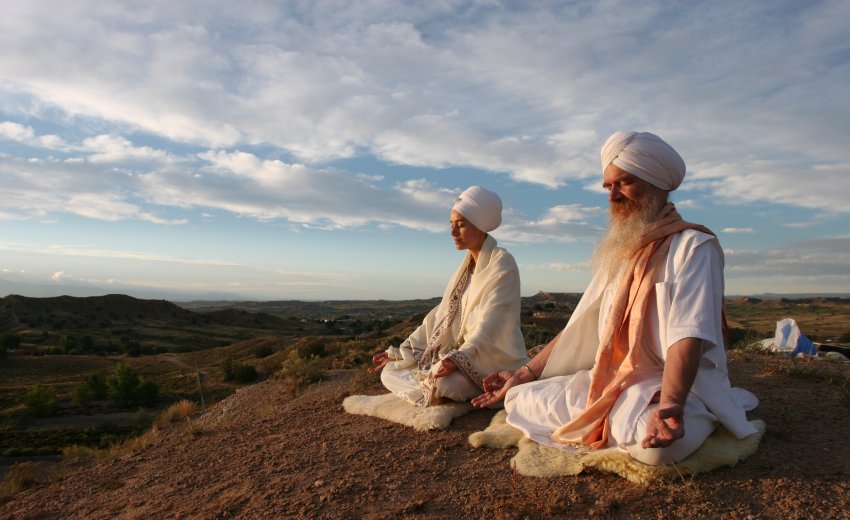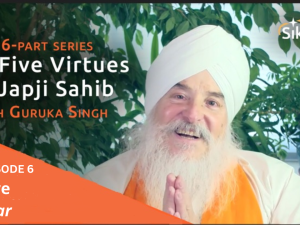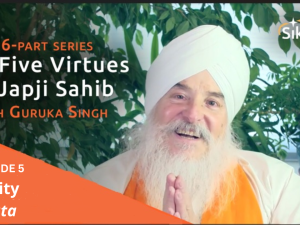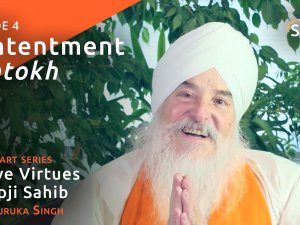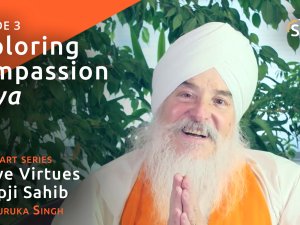In the previous post I wrote about WHAT meditation is and how it works. In this article we’ll go more into detail on HOW to meditate and provide a list of different of meditations that you can start to practice.
The Four Stages of Meditation
1. First, you must set yourself to meditate. It’s a good idea is to do some pranayama (breathing exercises such as alternate nostril breathing) and yoga exercises first to get your body stretched out, relaxed and energized so that your body doesn’t distract you during your meditation, plus, the energy that is stimulated by the yoga will help you meditate much better. All the energy in the central nervous system moves through the spinal cord, so you have to sit with a straight spine – all the vertebrae lined up without tension, but straight. Shoulders relaxed. That way you will not get sleepy, and will have a much more powerful experience. Meditation can be done with eyes closed and gazing at the third eye point (ajna) right in between the eyebrows, or with the eyes 9/10 closed but very slightly open ("sleepy eyes") gazing at the tip of the nose. The fixed gaze stimulates the hypothalamus and the pituitary gland and brings the brain into the alpha rhythm (relaxed but alert state) to allow yourself to let go and become absorbed into concentration. You can even meditate with your eyes open, staring at a single point such as a candle or a mandala. This is called yantra meditation. But we are going to discuss mantra meditation here, and that is much more easily done with eyes fully closed or 9/10 closed.
2. Second, you fix your attention on the mantra and the breath. This is called "Dharana." Meditation must begin with a focal point. That does not mean that you "stop thinking." No, it means that you begin focusing on the mantra and just let your thoughts happen. The mind will produce thousands of thoughts every second. That’s what it does! You can’t stop it. But you can use the mantra as a filter to clean the mind and the breath to gain control over it.
3. Third, you allow yourself to concentrate, "Dhyana." You must relax, let go and allow yourself to be drawn into the sound of the mantra and the rhythm of the breath. How? By listening deeply. This is what Guru Nanak Dev Ji means by "Suniai" in Japji Sahib. Suniai means deep listening. You must listen to the sound of your own voice as if it were a sound coming from outside yourself. Pay attention. Really hear the sound you are making. Listen deeply. Let your thoughts come and let your thoughts go. Watch them as they arise and fall away. Do not follow a thought. Observe it. As you begin this process, your ego will try to distract you: "My leg is falling asleep." "My nose is itching – should I scratch it, or just sit still?" "Did I remember to lock the door?" "Oh, I forgot to call veer ji!" etc. etc. This is where many people fail. People just give up too soon and say, "Well I can’t get into it. I’m not any good at meditating."
Just let the thoughts come and then let them go. Although you cannot stop thinking, you can observe your own mind at work instead of letting it get you. Don’t let your thoughts ‘grab’ you. If you find yourself following a thought and forgetting the mantra, just let the sound bring your concentration back to the sound. If you keep going, you will get through this stage of distraction and enter a deeper stage of absorption. It is like magnets. Have you played with magnets? As they get closer you feel the pull and then they pull harder until they finally come together. Let the mantra pull you in. Go deeper… relax and let go. Allow yourself to be absorbed in the sound-current.
Remember, the mind makes a wonderful servant, but a lousy master. Master your own mind. The tragedy of life is when the subconscious mind releases garbage into the conscious mind and you allow yourself to indulge in it. Keep going and clean out the garbage.
4. Lastly comes the stage of "Samadhi." In this stage of meditation you lose all track of time and space and become completely absorbed in your meditation. The breath becomes naturally very slow and deep and the thoughts of the mind fall away into the "background" while the mantra seems to go on all by itself, enchantingly beautiful. Vaheguru!
Remember, if you do not have mental garbage come up while you are meditating, then you are doing it wrong. When you meditate, you will see your own dirt. You will see it very clearly, but the mantra will filter it and clean it for you. It is a gradual process. That’s why we must meditate every day. We are exposed to negativity, perversity, corruption and other people’s garbage every day and the garbage in our own subconscious mind builds up. So, first we need to clean out the past accumulated garbage, which takes a concerted effort, and then we need to meditate daily to keep the mind clean on an ongoing basis. You brush your teeth, wash your body and comb your hairs every day, right? You like to look neat and clean. So why not take care of your inside as well as you do of your outside? It is useless to look good on the outside and have a mind full of garbage which you then proceed to dump on others. Ugh!
So how do people survive in a world full of negativity perversity, corruption and other people’s garbage, well, it’s either medicate or meditate! Some people try to get by by escaping from the garbage with drugs or alcohol. But then it is very temporary and the garbage is still there and keeps accumulating. So learn to meditate, clean out the rubbish and let your mind be your servant and not your master.
Getting Started & Making a Commitment
Okay, now that you have an overview of what meditation is and how to do it, the real work begins! You can read all you want but you will only benefit and experience this for yourself if you actually discipline yourself to DO IT! It can take time and practice so be patient with yourself and keep up! Just as you have to learn and practice playing a musical instrument, so you have to do the same with meditation. It might be difficult when you first start but as you practice you’ll get better and better and experience the benefits. Take some time to meditate every day. Even if you start with a short meditation and then gradually lengthen the time, the important thing is to be regular in your practice.
When to Meditate
You can meditate any time, however the most effective time is to get up early in the morning and use that special quiet time. The Amrit Vela ("Nectar Time") in the early morning hours is called that for a reason. Once the sun comes up, there are many more distractions and it can be very difficult to meditate. These early morning hours from 2.5 hours before the sun rises are when it is most quiet and you will be able to meditate and connect with your soul most effectively.
When you first wake up you will probably feel sleepy. Don’t grab a chai or coffee. Instead I highly recommend that you take a cold shower and massage your whole body. Not only is this extremely healthy and will also keep you from being sick, but it will give you lots of energy, wake you up and make you feel great!
Practice Makes Perfect
You will see and feel many benefits from meditating when you practice on a regular basis, much more so than if you just do it from time to time. For meditation to be most effective you should work on creating a daily practice. I would suggest that you make a commitment to yourself to do a particular meditation for a set period of time. You could even get a few friends and family to commit with you so that you can be a support to each other and share your experiences. 40 days is a good minimum time to commit to.
- 40 days is required to change or make a habit.
- 90 days days is required to confirm a the new habit.
- 120 days days is required to make the new habit your identity.
- 1,000 days days is required to master the new habit.
Simple Meditations To Start Your Practice
There are many meditations and ways to meditate. There is no ONE way. However, for the sake of a starting point, Here are some meditations that I have done and you can use as well.
- Simple Meditation To Calm & Balance – In this video Guruka Singh summarizes the steps in waking up and getting ready for your morning "Sadhana" (daily discipline). He then explains how the breath (breathing) effects your mind and body. The video ends with him showing a simple breath meditation that will relax and calm your mind.
- Waheguru Simran: Audio Picks for Meditation – This is a list of "waheguru" audio tracks which you can listen to and download and use in meditation. Find one that you like (follow the instructions at the top of this page) and then sing out load with the audio.
- Kirtan Kriya (sa-ta-na-ma meditation) – The Kirtan Kriya meditation is one of the first meditations that I ever learned and is great for breaking habit patterns, emotional balance and just overall calmness and clarity. Yogi Bhajan used to say that if you had to chose just one meditation, to do this one.
- Long Ek Ong Kaar Meditation – In the town of Goindwal in Panjab, India, even today this Divine Mantra is still inscribed on the walls of the Bowli Sahib (sacred well) at the house of Guru Amar Das. By chanting — over and over — the rhythmic sequence of these eight sound-beats, (EK ONG KAR SAT NAM SIRI WAHE GURU) the mind is entrained with this 8 beats = infinity connection. There is a layering effect over the time that one chants this mantra, and eventually the big wheel of GOD runs the little wheel of self — appearing in our life as — THY will is MY will. Chant this mantra to focus, structure, discipline and empower the mind.
- Shabad Kriya Meditation – This meditation is great to practice before going to bed and will help you sleep deeply and be relaxed. Also great to help recover from fatigue caused by normal daily stress, travel and even jet lag.
Other Meditations You Can Practice
- Sahej Sukh Dhyaan Meditation – This is a video with Guruka Singh talking about what meditation is and then walking you through the practice of this meditation. It will give you a very calm mind and the ability to listen deeply and understand the root of any situation.
- Sodarshan Chakra Kriya Meditation – Here is a powerful meditation described in Siri Guru Granth Sahib on page 1106 by Bhagat Jai Dev ji
- Meditation to Deal with Stress - In this video Gurucharan Singh talks about the effects of stress on our mind and body and gives a Kundalini Yoga exercise and meditation to help you deal with this stress.
- Seven-Wave Sat Nam Meditation – This meditation works to clear the mind of painful thought patterns much as the ocean waves wash the shore. Vibrating the sound of Sat Nam in seven waves will lift your energy, clear your mind and open you to a renewed experience of life.
- Man Jeetai Jagjeet – Conquer Your Mind & Conquer the World - Video class about the mind and a guided meditation that you can do while the video is playing.
- Meditation for Guidance – At times when the path of truth and clarity seems lost, calm yourself and still your mind, then the path will come to you. To live life according to the guidance of the inner truth is essential. If you do not, you will have doubts. If doubts are not removed, then frustration comes in. Frustration, when not released, leads to anger. Anger then leads to destructive action either to the self, others, or both. To stop this vicious cycle, create the habit to still the mind and ask questions of your own higher consciousness. This meditation can develop that capacity and strengthen your mental direction.
- Meditation to Hear the Inner Voice – With regular practice of this kriya, you will start hearing the inner voice, knowing exactly what is being said inside.
Related Topics for More Reading
- Sadhana and the Soul – Learn about the term "Sadhana" and working on a daily discipline to connect with your soul.
- Simran – Remembering… - Most of us, when we think of Nam Simran think of "repeating God’s Name" out loud, either musically, or simply verbally we think…. "Sat Nam, Sat Nam, Wahe Guru, Wahe Guru…" but actually, that is Japa, not Simran.
- Sadhana – Aradhana – Prabhupati – Video about setting a daily routine and rhythm in your life and the effects of doing so. Changing the way that you look at your daily Sadhana (Daily Discipline), Creating prosperity in your life.
- Past Tense – Questions and answers about meditation and leaving the past behind.
